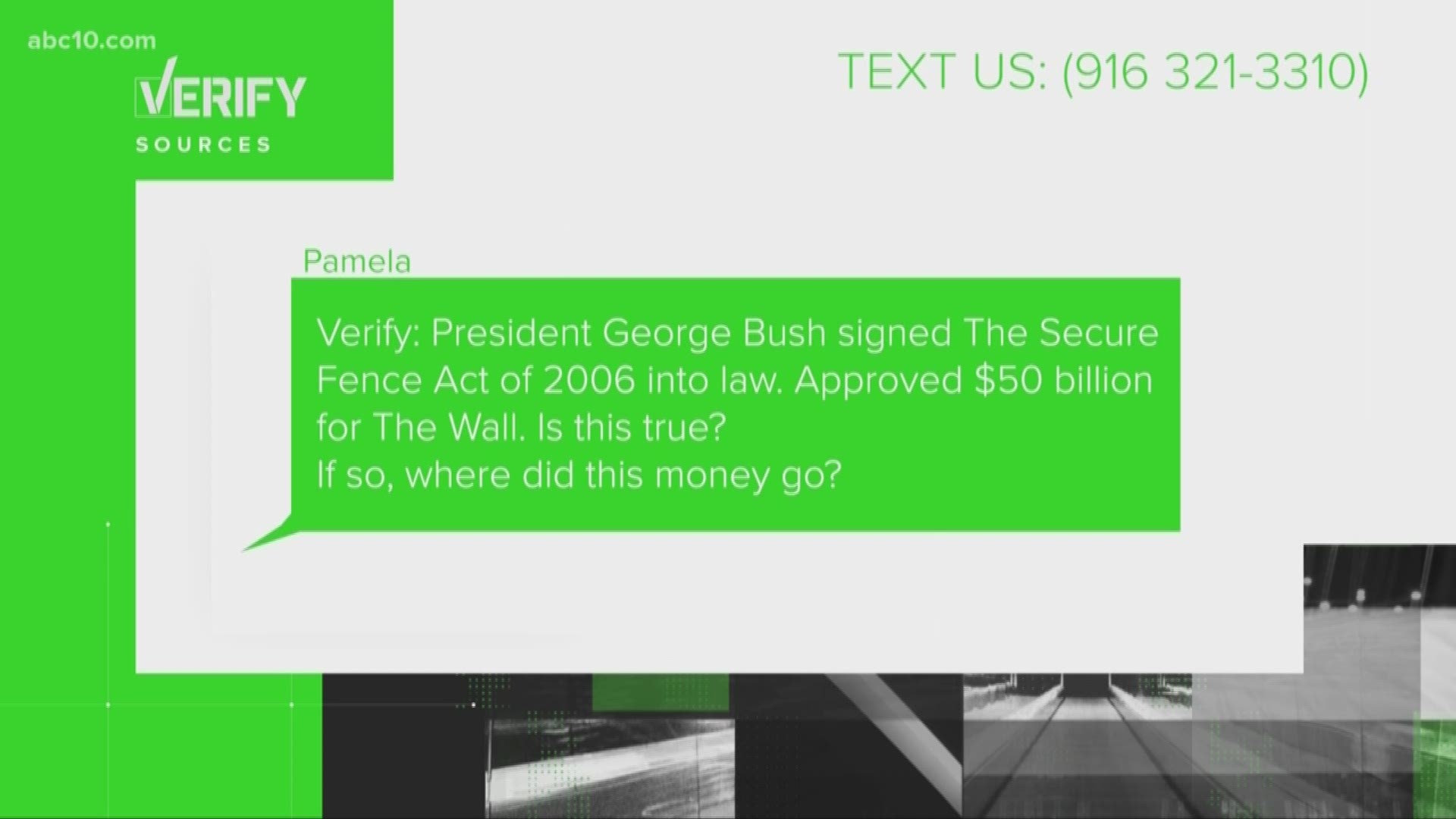SACRAMENTO, Calif —
ABC10 viewer Pamela texted us to ask to Verify whether or not President George W. Bush signed the Secure Fence Act of 2006 into law. She said that it’s her understanding that this act approved $50 billion for a border wall.
See something you want us to Verify? Text it to us: (916) 321-3310.
That dollar figure is especially striking, given the recent government shutdown over President Trump's demand for a comparatively paltry $5 billion. So, what happened with the 2006 law and how does it relate to the debate we're having today? Let's dive in.
Claim: President George W. Bush signed the Secure Fence Act of 2006 into law, approving $50 billion for the wall.
Sources: To verify, we looked at the text of the Secure Fence Act, the Congressional Budget Office score of the bill and multiple Government Accountability Office's Reports.
What we found about the Secure Fence Act: President George W. Bush did indeed sign the Secure Fence Act in 2006.
The bill required that by the end of March 2008: "the Secretary of Homeland Security shall take all actions the Secretary determines necessary and appropriate to achieve and maintain operational control over the entire international land and maritime borders of the United States."
One of the actions was to include a physical barrier, such as a fence, and surveillance through more personnel and technology. The bill set a mark of building 700 miles of barriers along the US-Mexico border.
The taxpayers ended up getting barriers along 654 miles of the border, in a combination of both pedestrian fence (meant to keep people from climbing over) and shorter vehicle barriers that allow pedestrians through, but block cars and trucks from entering the Country where there are no roads.
As a result, most of the land border with Mexico has some kind of barrier already, while most of the river border along the Rio Grande does not.
The river acts as a natural moat, making people more easily spotted by Border Patrol cameras and sensors when crossing it.
You can see what kinds of barriers already exist on the border (and exactly where) on a handy interactive map created by USA Today.
President Trump's push for a wall (which he's increasingly tending to call a "barrier" or "fence" despite past promises to specifically build a concrete slab wall) is really about adding to and upgrading the barriers we already have.
What we found about the money: Part of the reason this 2006 law gains interest is the price tag. The current fighting over $5 billion would seem a bit petty if we'd already spent $50 billion on border barriers.
Back when Congress voted on the Secure Fence Act, the CBO report estimated that direct spending would increase by an upwards amount of $54 billion.
But most of that money wasn't for the border barriers.
A GAO report from 2018 said that from 2007 to 2015 Customs and Border Patrol spent around $2.3 billion to build up physical barriers.
Most of the cost described by CBO was for other things in the bill: most notably, the construction and staffing of 20 new detention centers on the border.
TRUE OR FALSE? It's true that President George W. Bush signed a bill that led to the construction of barriers that now cover approximately one-third of the US-Mexico border.
But it's false that the 2006 bill approved about ten times the money for border barriers that politicians are fighting over today.
Continue the conversation with Brandon on Facebook.

